A few recently completed structures.











 pak152 at http://www.flickr.com/photos/pak152/...7612302891734/
pak152 at http://www.flickr.com/photos/pak152/...7612302891734/
Quote:
Thursday, October 08, 2009
NLM Interview with Ethan Anthony, President of Architectural Firm HDB/Cram and Ferguson
by Shawn Tribe
We have featured the work of architect Ethan Anthony and HDB/Cram and Ferguson, an architectural firm which is based out of Boston, Massachusetts, many times here on the NLM.
I have often been struck by the qualitative design and materials that are put into this firm's work. Of course this is not unique only to this firm, for we have also shown many fine examples of the work of other architects as well, including the stunning work of Duncan Stroik as just one example. One aspect that did strike me as rather more unique to this firm, however, is that it seemed to more consciously pursue the gothic form. This, along with the natural materials used in the building these same churches, piqued my curiosity and I determined to pursue an interview with Mr. Anthony in order to gain some sense of the principles and philosophy which informs their work.
Here is that interview.
Mr. Anthony, can you give us a little background about yourself and your firm?
Ralph Adams Cram founded the firm in 1889 and it has been in continuous practice since then. The firm has completed hundreds of new churches and additions and other projects in 44 state and France, Canada, Cuba and Panama. Much of the firm’s early renovation work was converting churches of various denominations from the dominant American Protestant style (Catholic churches were also often built in Protestant style) to a style based on orthodox Catholic liturgy. Up until Cram even Catholic churches in this country looked like congregational churches. Cram was smitten with the Catholic liturgy he saw in Italy and worked much of his life to return American liturgy to a Roman Catholic basis.
Part of that process was a revival of Catholic architectural styles including both Romanesque and Gothic. I came to the firm in 1991. When I arrived most of the practice was commercial architecture with a few church related projects. The firm’s most recent Gothicist had been John Doran and Alexander Hoyle and they died during the 1960’s. When I saw the body of work and the quality of the drawings I resolved to reinvigorate the church practice and now nineteen years later our practice is entirely religious and church related academic.
I was educated by the Jesuits at Xavier High School in Concord, MA and finished my architectural degree at the University of Oregon. I spent my first three years out of architecture school working at Payette Associates a prominent medical architecture firm here in Boston. I practiced independently for 7 years and then joined the firm which was then known as Hoyle, Doran & Berry, Inc; formerly Cram and Ferguson. That proved unwieldy as a name and I shortened it to HDB/Cram and Ferguson, Inc.
Many firms today operate within the context of a classical or Romanesque idiom, though yours seems to be more weighted toward a medieval, or gothic, form of building, is this merely incidental, or does your firm wish to focus on the gothic style?
Cram believed that the highest point of development of Catholic architecture was Gothic and that it had been cut short by the Reformation. He dedicated his life to designing new Gothic architecture because he saw it as a re-birth of Catholic architecture that could carry on to new heights and could have positive impact on the morality of our civilization. I agree with Cram that Gothic is the highest form of Catholic architecture and that it is by far the most beautiful spiritual architecture. Both Cram and I have clients who love Romanesque and who demand it and we both comply.
Who and what would you cite as particular influences in your design work?
I have studied all of the classical Gothic masters as represented by their churches. The greatest are unquestionably the French Masters who began what was known as “the style” that spread around the world. In France my favorite is Notre Dame but I also love Rheims, Rouen, Amiens, Chartres, Laon, in Italy; Li Duomi in Milan and Firenze, San Miniato, St. John Lateran, Assisi, San Marco, San Galgano; in Spain; Cordoba, Sevilla, Leon, Santiago de Compostela, in England; Glalstonbury, Rievaulx, Fountains, Bath Abbey, St. George’s, Windsor, just to name a few highlights.
What would be your thought on the gothic revivalists such as AWN Pugin, Sir Ninian Comper or G.F. Bodley?
We owe a tremendous debt to the Pugins. Father and Son were responsible for the revival in Gothic architecture and preserving and reviving Catholic architecture and liturgy more than any others. A. W. N. Pugin b.1812 (an Anglican convert to Catholicism in 1834) as the champion of Catholic Architecture in England following his conversion and the Catholic emancipation Act of 1836, inspired his contemporary Scott who inspired the next generation Bodley b.1827, who inspired the much younger Comper b. 1864 (a contemporary of Cram but practicing almost exclusively in England) who traced their inspiration back to the course set by Pugin. All of the followers of Pugin were High Church Anglicans including Cram. As Cram certainly did I have looked back to Pugin as a resource. I have his books and use them in my work.
Do you have an "ideal" church?
No, and that is important. Each parish is unique and the building should reflect the interests and liturgy of the parish and the time. In this way the parish gives live to the building. I think that is one thing that separates me from many architects. We do not arrive at the parish with a powerful bias for one style or another. I doubt we would be hired to design a Big Box church and I have no interest in that but any church that wants an interesting church based on faithful tradition and precedent and true spiritual values interests me.
This said, if there were architectural elements you would be interested in seeing a revival of, what might they be? For example, within the past two centuries, we saw the revival of elements like the rood screen as well as the ciborium magnum in other instances. Do you have any particular interests in this way and if so, can you explain what informs those interests?
I am a big fan of elaborate altar pieces, Baldacchini and assorted art work including mosaic and fresco and anything that puts the focus on the altar. I also like engaged altars and enjoy designing stone altars with carved panels.
Two churches which particularly stand out as products of your firm are Syon Abbey and Our Lady of Walsingham, churches which are noteworthy for their use of timber in the roof or porches, and which employ stone in their exterior and even interior construction -- materials which are more historically rooted in this style. Is their a philosophy or set of principles behind this?
Yes there is a set of principles. Some are carryovers from the firm such as honest use of materials, faithful expression of the liturgy and an emphasis on a search for beauty in mass and line and material. To that I would add a willingness to help the parish attain beauty at a reasonable cost. It is easier to achieve beauty when no mundane materials need be used and no expense is to be spared. In the practical world of parish architecture one must achieve beauty by sparing use of expensive material and thoughtful design.
Can you speak more to this principle of the "honest use of materials" as well as the "faithful expression of the liturgy"?
Materials are our palette and in parish work we must be very restrained in using expensive materials. We use some substitute materials and we use strategic placement of small quantities of high quality materials. We do not give up on providing the material that is expected. The ceiling is wood, the walls are stone. The materials chosen are selected because they can be produced economically with modern methods. For example we use small amounts of cut stone and large amounts of split which is less costly.
By faithful expression of the liturgy I mean expressing the liturgy and not our design of the liturgy. It is all about leaving our ego out and focusing on the message.
Many are bound to ask however, is not building with such materials not substantially more expensive?
It is more expensive than Strip Mall or Big Box Church or International Style Modernesque. As a general rule we use natural materials in place of man-made materials. We avoid materials that are inherently toxic or energy intensive like vinyl and plastics and brick. We do ship materials over great distances but also always consider locally available alternatives.
What do you see as the particular challenges for architects today who are trying to design in a spirit of continuity within the context of the Latin rite?
The greatest challenge is at the parish level. We are consultants and as such we serve the parish. The parish drives the liturgy within their church and in practice this is often the Pastor. In some cases it can be the Director of Liturgy but each church has a different situation and we typically discuss alternatives such as placement of the altar and Baptismal Font and provision of a communion rail with them during design. I try to make them aware of the historical and liturgical background so that they can achieve authenticity in their church but the decisions are ultimately made by the parish. I believe our role is to educate so that the client can make an informed decision. We are not crusading for ad orientam or communion rails or kneeling communion or any other specific liturgical usage. I am crusading for the employment of all the beauty, treasure and love the parish can offer and all the beauty, knowledge, authenticity, integrity, tastefulness and restraint I can bring to the design, construction and decoration I can bring to the building of their church.
These are difficult and highly emotional matters and it requires both sensitivity and courage on the part of the parish and the Architect to achieve a good solution.
In the West there is often an expressed concern about not being simply "revivalist" -- which is to say, not simply reproducing earlier historical styles. What are your own thoughts about this? Further, what, in your estimation, were some of the lost opportunities of the 20th century as it regards sacred architecture? Where have we succeeded and where have we, arguably, failed and what lessons might we take from this going forward?
The whole debate about revival began in the inception of the modernist period when the new modernist architects and their supporters tried to ridicule the traditionalist architects and traditional architecture with claims that their work was not genuine because it was not original. This argument set up a straw man, originality, as a test that had to be passed to claim relevance and that traditional architecture simply did not meet. It was the one real moment of genius of the modernist movement. It took fifty years 1925-1975 for architectural traditionalists to develop an effective counter argument.
In the meantime much of America’s traditionalist architecture was demolished through urban renewal. Many of the buildings demolished were based on Christian Romanesque church architecture including countless Richardsonian Romanesque town halls and railroad stations, and the largely Romanesque human-scale residential blocks of Boston’s West End, so powerful was the anti-traditionalist windstorm. They were largely replaced with “International Style” buildings that very deliberately eschewed Christian symbolism.
This anti-Christian and anti-symbolism storm gained strength beginning with the end of World War II and only began to die out in the 1980’s after Post-modernism re-legitimized quotational architecture as in the work of Charles Moore and Michael Graves. Their association with the Princeton architecture school made them unassailable by the promoters and protectors of modernism and Philip Johnson’s conversion with the AT&T building sealed the fate of modernism. Their work was non-religious but they opened the way for religious architects to begin using religious symbolism in buildings again. Ever since modernist architecture has been a distinguishable style with a beginning and (at last) an end. I identify all modernist architecture after 1985 as Modernesque since it too is imitating and copying something. In Colombia for example traditional Spanish Colonial buildings have all but disappeared in many cities to be replaced by leaden Corbusier and Mies knock-offs.
The current architectural traditionalist movement which I call the Third Revival, is really an outgrowth of Post-Modernism. Architects are once again free to use symbolism, even religious symbolism in their buildings. Art is also OK as is the contribution of the artist and the craftsman in making the building. The danger is that architects who have not studied or are insensitive to the intrinsic meaning of the symbols they use will use them incorrectly or inappropriately. Symbols from Roman architecture that once celebrated the Pagan gods, for example, used on a baseball stadium as decoration.
Are there any final thoughts you would like to aspiring and budding young architects who would like to design churches?
Five years ago I wrote an article for Sacred Architecture called “A Long Last Look at American Sacred Architecture” in which I lamented the demise of good religious architecture and its replacement with flying saucers, sheds and barns. When I wrote that article had already designed and built three new traditional churches. Five years later we have built another and designed two more churches and a new seminary as well as a number of smaller projects for furnishings and alterations to restore traditional church interiors destroyed during the last fifty years.
There is still just one school of architecture in this country that teaches the design of traditional religious architecture, the University of Notre Dame. None of the others feel it is important enough to include it in their curriculum but that is a reflection of the ambivalence of the public toward traditional religious architecture. It is still true that future generations will judge us by the buildings we leave just as we judge past generations by the same measure. We have made a step in the direction of a more responsible and responsive architecture but the people must make the choice every day whether they will support us in this quest.
We have seen traditional religious design projects put on hold in a few parts of the country as the recession has impacted parishes. This is the opposite reaction to that of past generations who pushed forward with their plans in defiance of the great depression. For this fledgling movement to survive the architects and designers who have committed themselves to restoring traditional religious architecture need employment. If the parishes who want to build in traditional styles do not push forward with their projects in spite of the recession this movement will die and it will have been the Long Last Look. The University of Notre Dame is producing young architects who want to design and build beautiful new churches, our country must provide them with the opportunity to build new churches. The parishes must move ahead with their plans to build if they are to be able to realize their dreams.
* * *
To learn more about the work of the HDB/Cram and Ferguson, please visit their website: www.hdb.com
http://www.newliturgicalmovement.org...n-anthony.html
|
Recently completed chapel at Thomas Aquinas in Santa Paula, California.
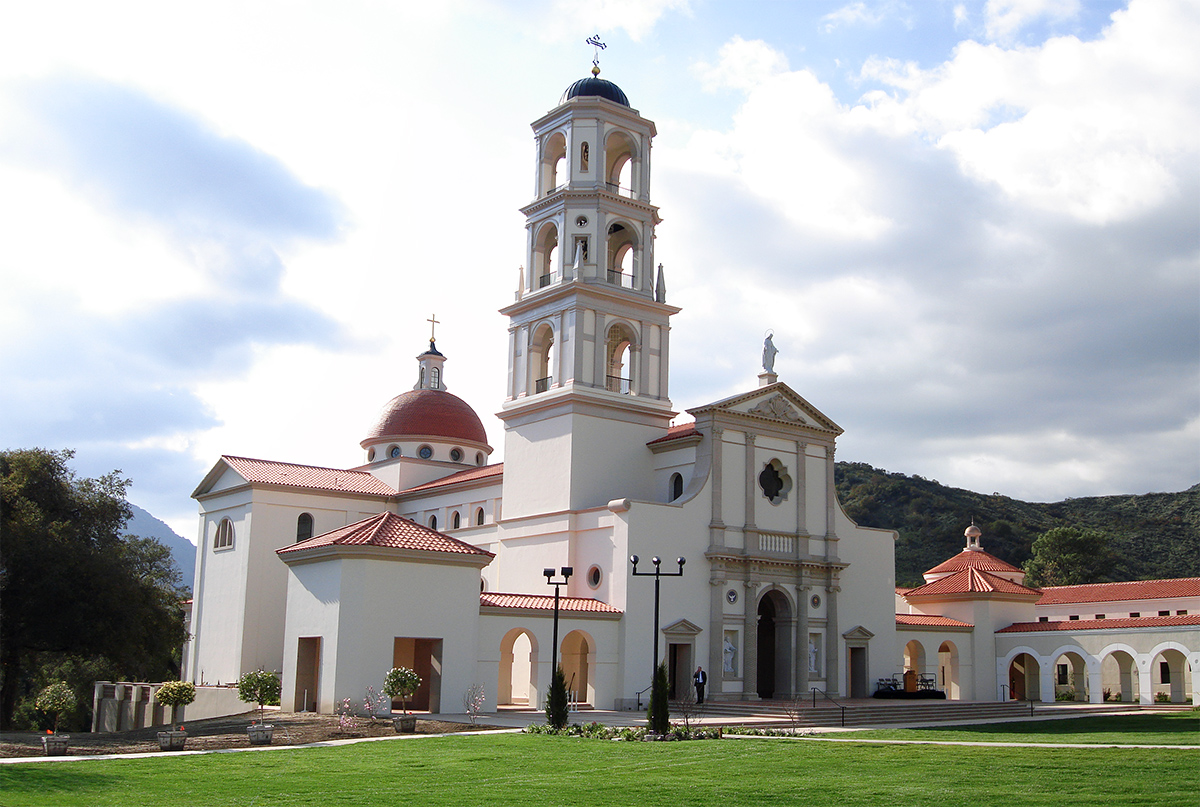
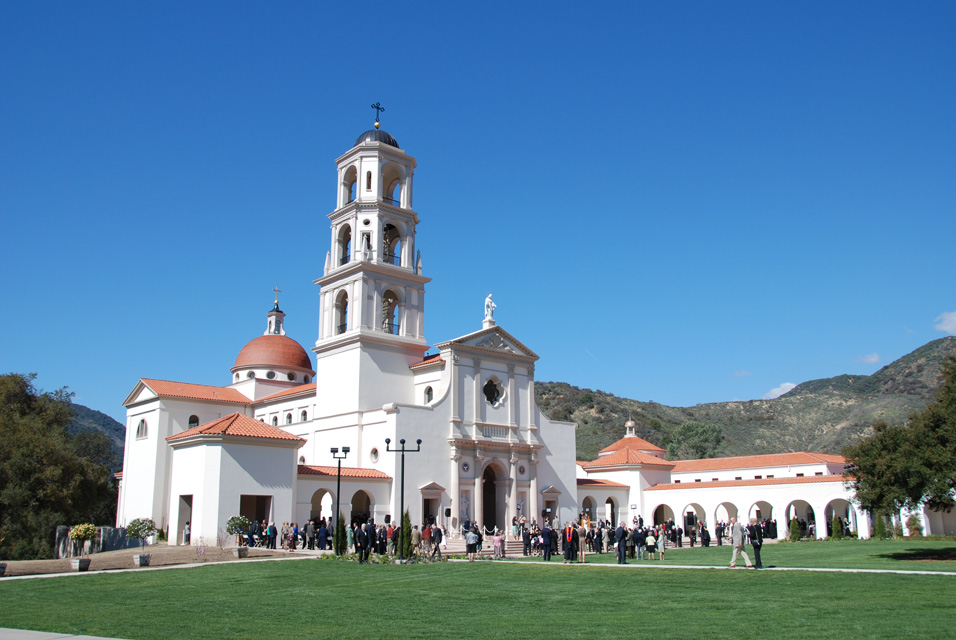


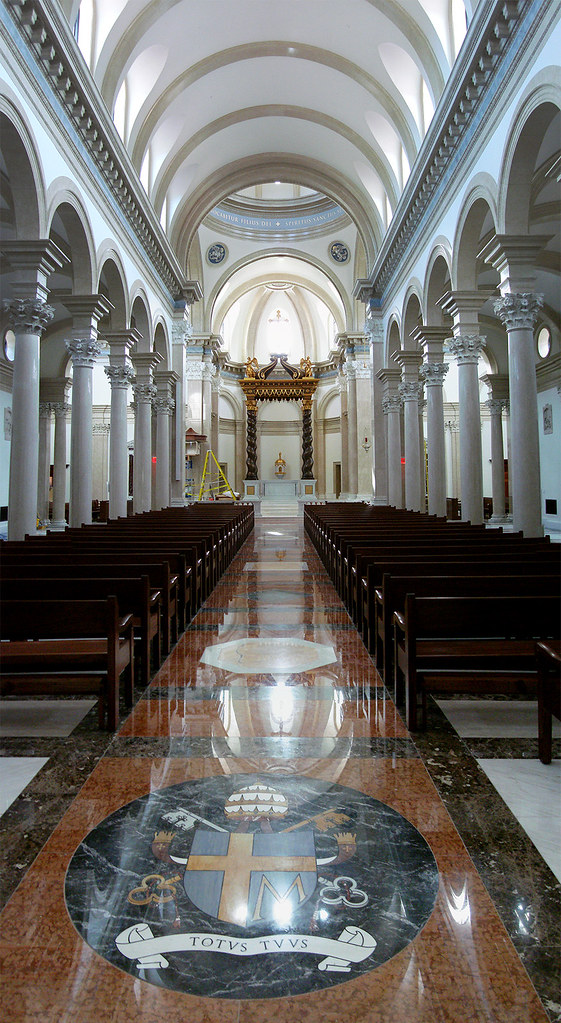


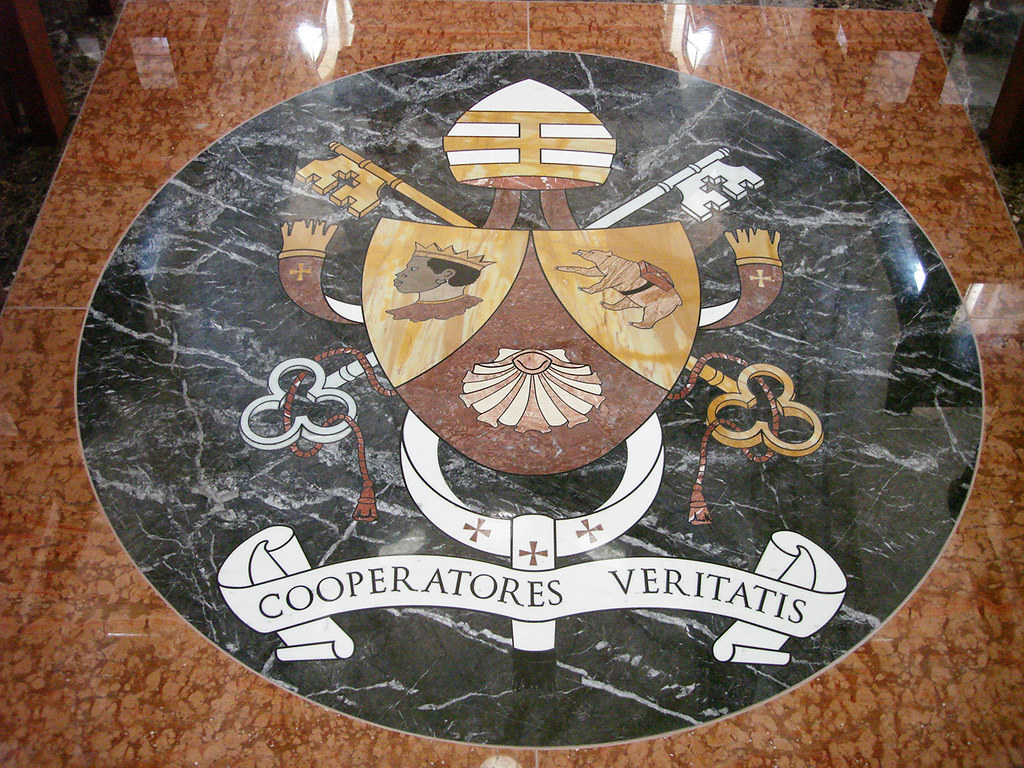
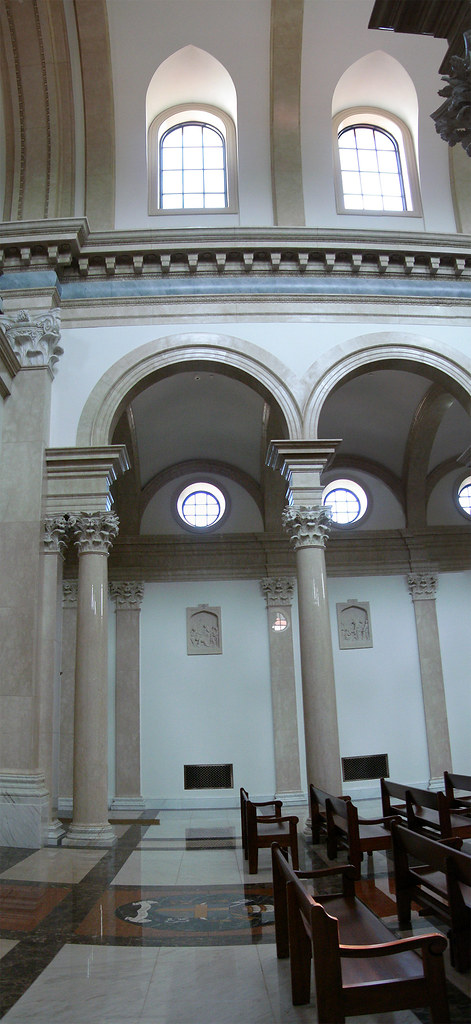
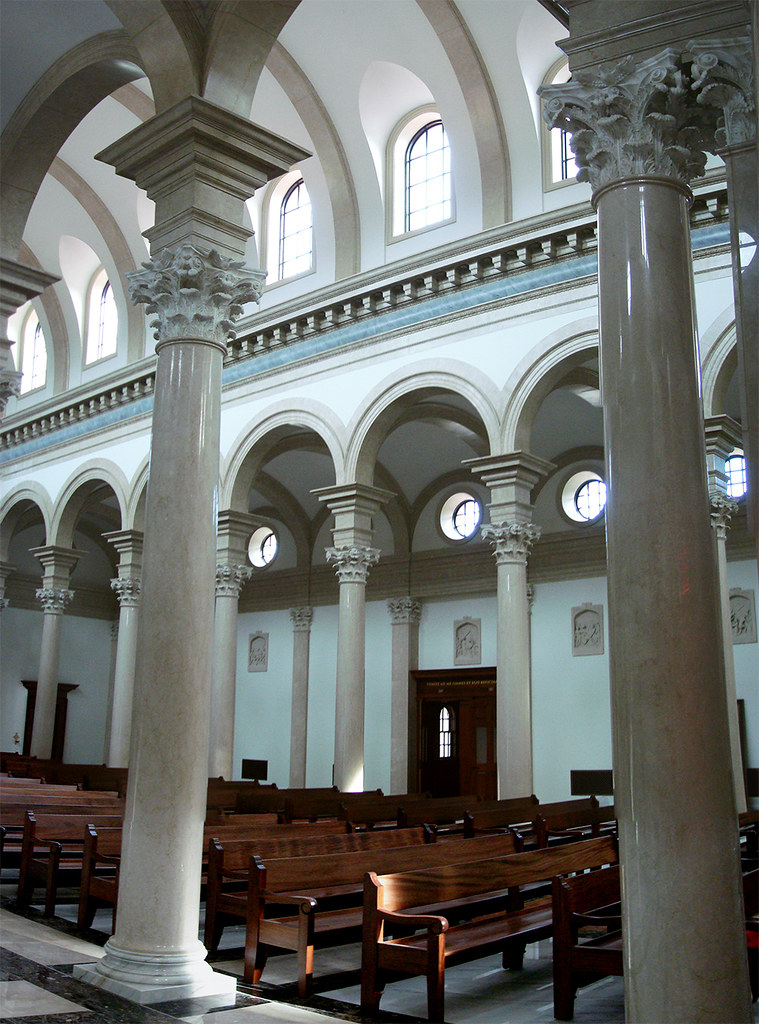


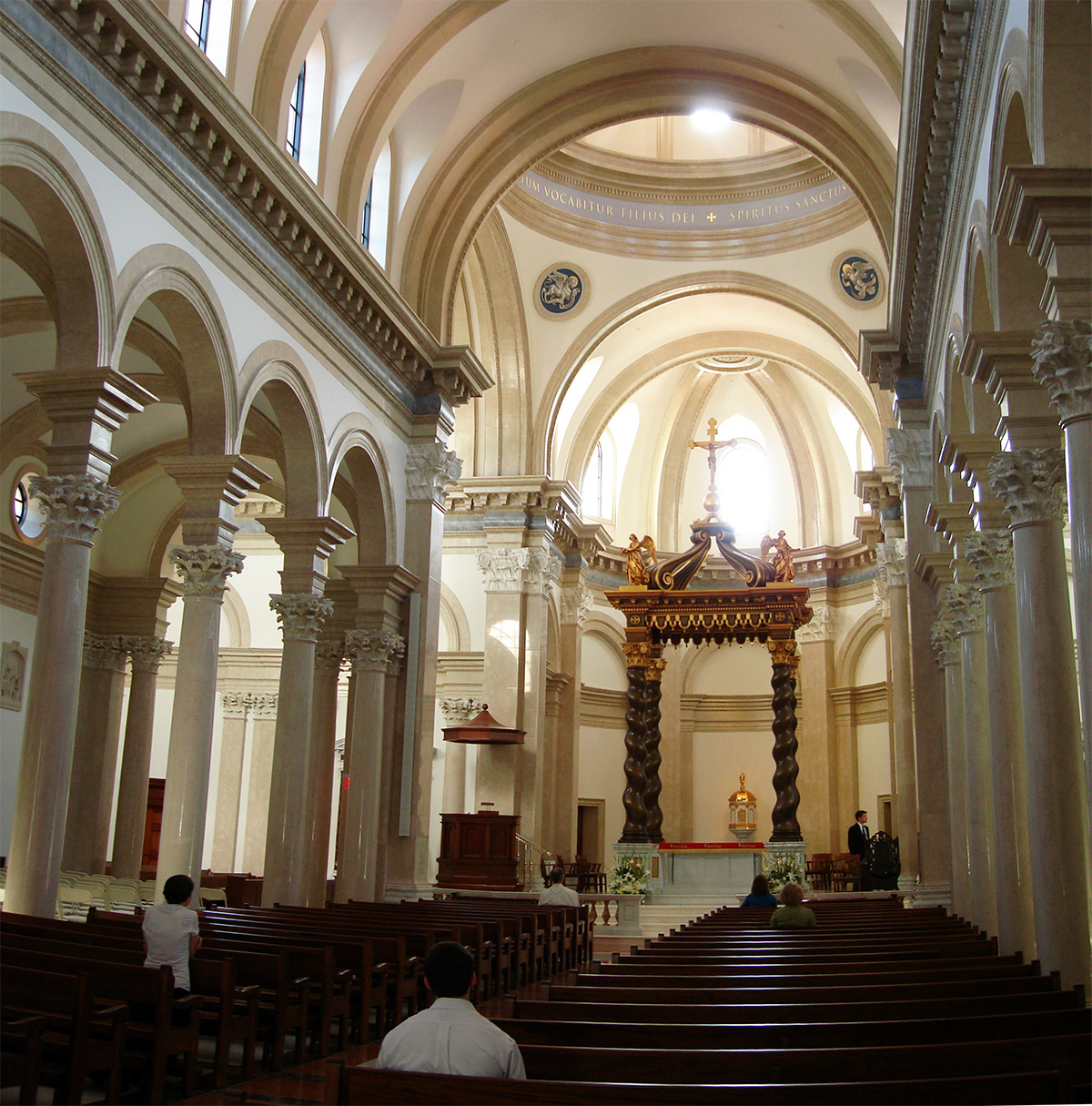

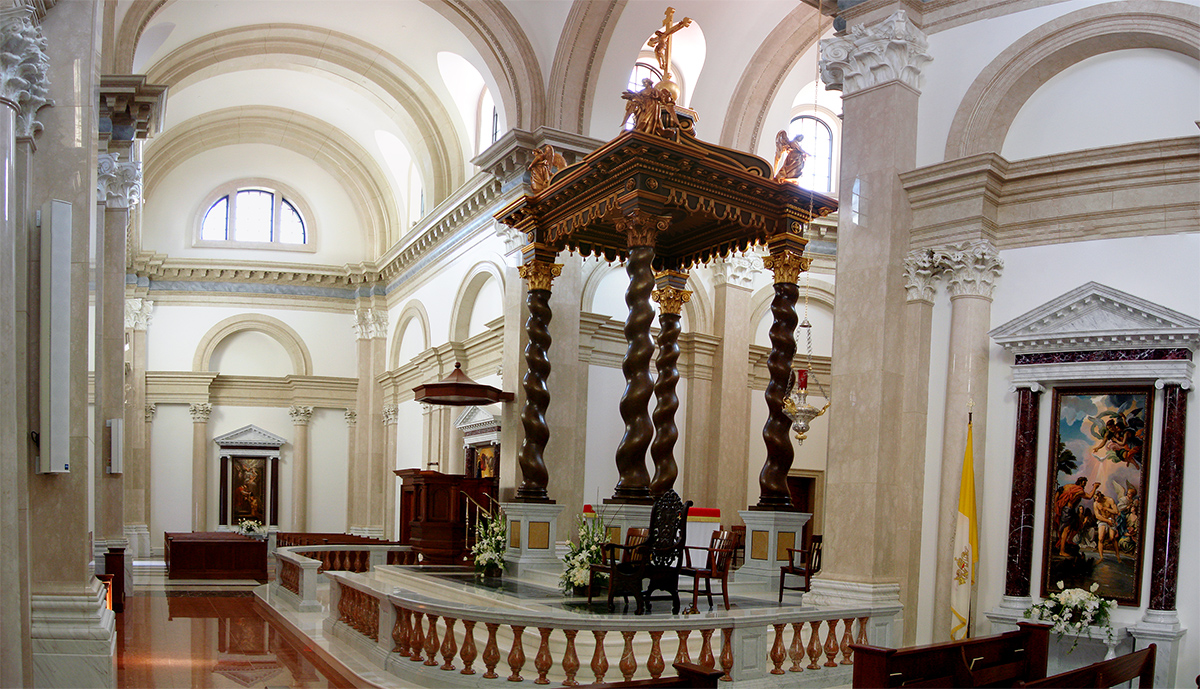


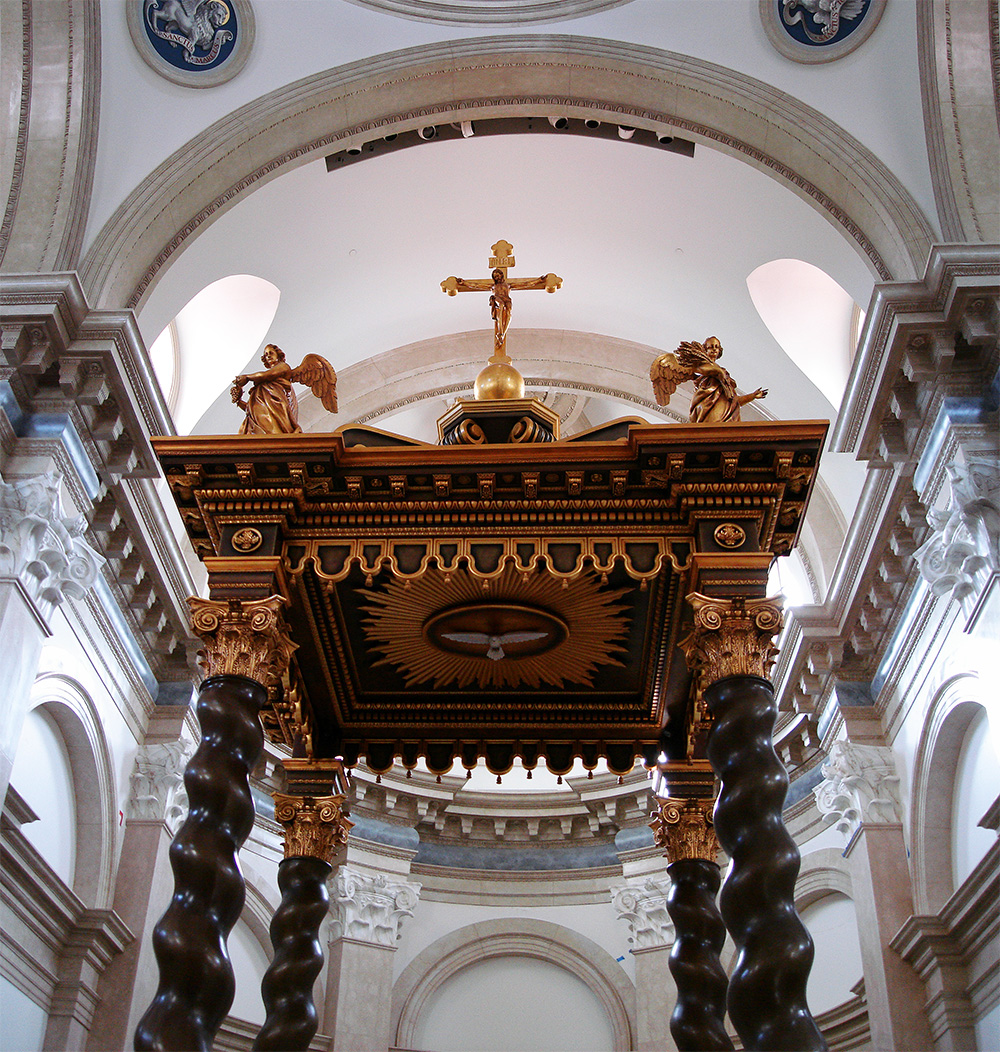

Quote:
I had the good fortune to visit the new chapel at the Seminary of Our Lady of Guadalupe in Denton, Nebraska last week. Its architect, Thomas Gordon Smith, has been a leader in the use of New Classicism for Catholic churches for some time, and though this project has moved slowly as funds have some in, it is nearing completion.
A few notable points. First, this building has been ratcheted down in the budget without losing a convincing traditional design: the shiny copper used for the cornice on the exterior replaces stone, interior columns are made of cast stone (high quality "concrete") which nonetheless look beautiful and have a high level of detail, and stenciling on the ceiling was done by the students of the seminary themselves.
A few other points of design sophistication: the exterior porch shows a great sense of the thickness of the wall (about 5 bricks thick) which saves the building from looking like a strip mall of pseudo-classical veneer and instead makes it appear deep and authentic. The porch also has round openings which not only reinforce the sense of the thickness of the wall, but show that the porch is tall inside and therefore a grand space. A very clever touch is seen in the front exterior entablature above the inscription: the center part is enriched with dentils and a more elaborate architrave (sorry for the architecture-ese) and then it quiets down at the edges. Saves money and adds design sophistication.
The half round or "thermal" window on the side has an arch composed which is three brick thick instead of merely one, suggesting the strength of the arch. The interior has a truly noble simplicity as well as beauty. The high altar under construction was taken from a closed church. More great work from a very talented architect. Enjoy!
http://www.creativeminorityreport.co...guadalupe.html
|









__________________
"If there is anything to be gained by honesty, then we shall
be honest; if we must dupe, then let us be scoundrels.”
- Frederick the Great
|



